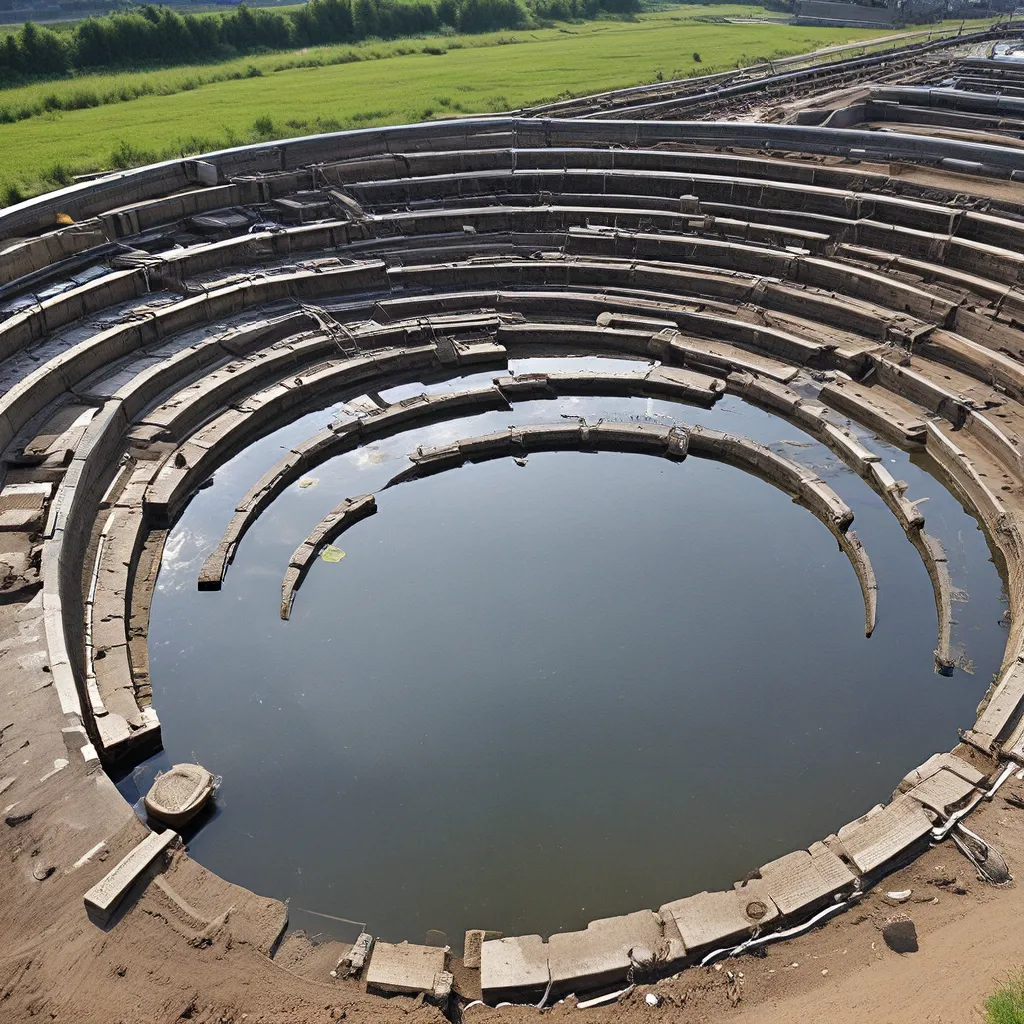
As I delve into the world of wastewater treatment, I can’t help but feel a sense of excitement. Gone are the days when it was seen as a necessary but costly burden. Today, the focus is shifting towards the recovery of resources from wastewater, transforming it into a goldmine of opportunities.
The circular water economy is the new frontier, where we’re not just treating waste, but closing the loop on our precious water resources. It’s a game-changing approach that not only reduces environmental impact but also provides a sustainable source of materials and energy.
Let me take you on a journey through this fascinating realm, where innovation is redefining the way we think about water.
Renewable Energy from Wastewater: Powering the Future
One of the most exciting developments in the world of wastewater treatment is the production of biogas. This renewable energy source is generated through the anaerobic digestion of organic matter in the wastewater.
Imagine, the very waste that we’ve been struggling to manage is now fueling our future. The biogas can be used to generate electricity, heat, or even power vehicles, providing a sustainable source of energy that reduces our reliance on fossil fuels.
But the benefits don’t stop there. The residual solids from the anaerobic digestion process can be recovered as a nutrient-rich fertilizer, closing the loop and creating a truly sustainable resource cycle. It’s like turning waste into wealth, a true testament to the ingenuity of the circular water economy.
Solar-Powered Wastewater Treatment: Harnessing the Sun’s Energy
Another innovative approach that is gaining traction is the use of solar-powered wastewater treatment. This ingenious idea combines the power of renewable energy with the necessity of wastewater treatment, creating a synergistic solution that’s good for the planet and the bottom line.
By installing solar panels across wastewater treatment plant sites, we’re not only treating the water in a sustainable manner but also generating renewable energy to power the entire operation. It’s a win-win scenario that reduces the overall environmental impact of energy production while promoting resource efficiency and sustainability.
One shining example of this approach is the Blue Plains Advanced Wastewater Treatment Plant in Washington, D.C., where they’ve harnessed the sun’s energy to power their facility, adding to their renewable energy mix.
Extracting Value: Resource Recovery from Wastewater
But the wonders of the circular water economy don’t end there. The recovery of valuable resources from wastewater is another game-changer. Think about it – hidden within the seemingly mundane wastewater are precious metals, nutrients, and other materials that can be reclaimed and put to use in the circular economy.
Phosphorus, nitrogen, and even metals can be extracted from the wastewater and repurposed, reducing waste and providing a sustainable source of materials that can be reused and recycled. It’s like turning trash into treasure, and it’s happening right now in places like Scotland, where Scottish Water is recovering grit from wastewater for the construction industry.
Embracing the Circular Water Economy: A Sustainable Future
As I delve deeper into this topic, I’m struck by the sheer innovation and forward-thinking that’s driving the circular water economy. It’s not just about treating wastewater – it’s about rethinking the entire system, closing the loop, and creating a more sustainable and resilient future.
By embracing renewable energy, resource recovery, and a circular approach to water management, we’re not only reducing waste and environmental impact but also building a new economy – one that’s centered on resource efficiency and sustainability.
It’s an exciting time to be a part of this revolution. The challenges may be daunting, but the opportunities are endless. As we continue to explore and experiment with new technologies and practices, I can’t help but feel a sense of optimism about the future of our water resources.
So, let’s dive in, shall we? The circular water economy is calling, and it’s time to answer the call.
Joining the Conversation: Connecting with the Our Future Waters Community
As I’ve delved into this topic, I’ve discovered a vibrant community of professionals, experts, and enthusiasts who are all working towards a sustainable water future. The Our Future Waters network is one such community, where individuals from various backgrounds come together to share ideas, collaborate, and drive progress.
I’d encourage you to explore this community and join the conversation. By connecting with like-minded individuals, you’ll have the opportunity to learn from their experiences, gain new insights, and contribute your own perspectives to the ongoing dialogue.
Whether you’re a seasoned wastewater treatment professional or simply curious about the circular water economy, there’s a place for you in this dynamic community. So, why not join the Our Future Waters network and become a part of the movement that’s shaping the future of our water resources?
Conclusion: A Future Powered by the Circular Water Economy
As I reflect on the wonders of the circular water economy, I can’t help but feel a sense of awe and optimism. It’s a future where waste becomes wealth, where water is recycled and reused, and where renewable energy and resource recovery are the norm.
By embracing this innovative approach, we’re not just reducing our environmental impact but building a more sustainable and resilient future. It’s a future where the Alpha Wastewater services play a crucial role in closing the loop on our water resources, transforming the way we think about wastewater and the opportunities it presents.
So, let’s dive in, let’s explore, and let’s be a part of the change that’s shaping the future of our water resources. The circular water economy is here, and it’s time to embrace it with open arms.